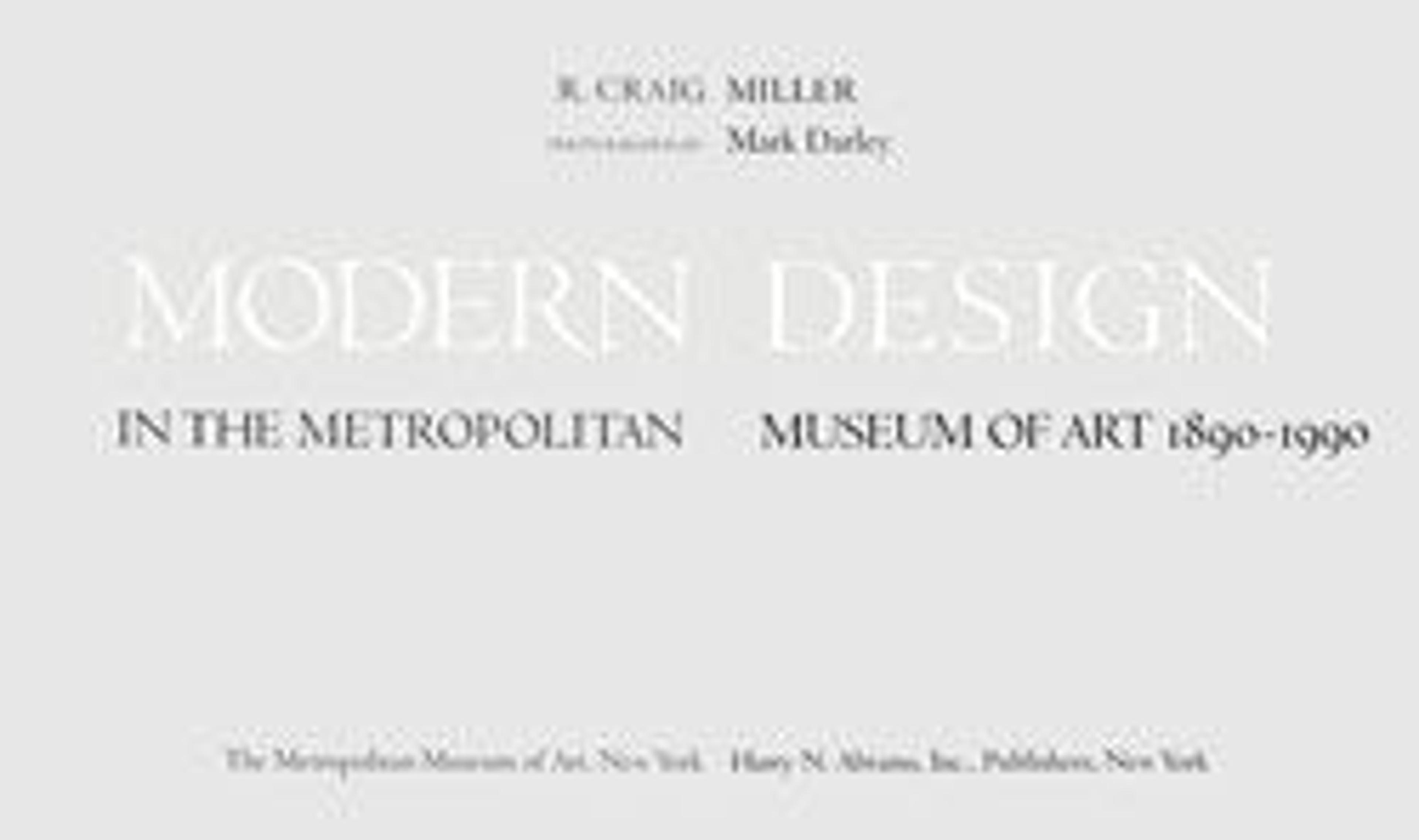Sideboard
Karl Emanuel Martin (Kem) Weber arrived in San Francisco in 1914 to supervise construction of a pavilion at the Panama-Pacific International Exposition celebrating his native Germany. Unable to return to Europe after the outbreak of World War I, Weber settled in California and brought to the west coast an aesthetic he had developed under the tutelage of the German architect Bruno Paul.
This double pedestal sideboard is part of a suite designed by Weber for the Grand Rapids Chair Company. (See MMA 1985.86.2 for an example of an armchair that was part of the suite.) In each chartreuse lacquered pedestal of the sideboard, four vertically stacked drawers with rounded front edges are separated by horizontal silvered banding. Each pedestal is raised on a recessed dark wood foot, and the two pedestals are joined with a recessed dark wood top, carved with an abstract frieze, and three recessed horizontal stretcher-like shelves. The suite was shown at the Rike-Kumler department store in Dayton, Ohio in 1928.
This double pedestal sideboard is part of a suite designed by Weber for the Grand Rapids Chair Company. (See MMA 1985.86.2 for an example of an armchair that was part of the suite.) In each chartreuse lacquered pedestal of the sideboard, four vertically stacked drawers with rounded front edges are separated by horizontal silvered banding. Each pedestal is raised on a recessed dark wood foot, and the two pedestals are joined with a recessed dark wood top, carved with an abstract frieze, and three recessed horizontal stretcher-like shelves. The suite was shown at the Rike-Kumler department store in Dayton, Ohio in 1928.
Artwork Details
- Title: Sideboard
- Artist: Kem Weber (American (born Germany) Berlin 1889–1963 Ventura, California)
- Manufacturer: Grand Rapids Chair Company (Grand Rapids, Michigan)
- Date: ca. 1928
- Medium: Wood, metal
- Dimensions: 33 1/4 in. × 72 in. × 20 in. (84.5 × 182.9 × 50.8 cm)
- Classification: Furniture
- Credit Line: Purchase, Theodore R. Gamble Jr. Gift, in honor of his mother, Mrs. Theodore Robert Gamble, 1985
- Object Number: 1985.86.1
- Curatorial Department: Modern and Contemporary Art
More Artwork
Research Resources
The Met provides unparalleled resources for research and welcomes an international community of students and scholars. The Met's Open Access API is where creators and researchers can connect to the The Met collection. Open Access data and public domain images are available for unrestricted commercial and noncommercial use without permission or fee.
To request images under copyright and other restrictions, please use this Image Request form.
Feedback
We continue to research and examine historical and cultural context for objects in The Met collection. If you have comments or questions about this object record, please contact us using the form below. The Museum looks forward to receiving your comments.
